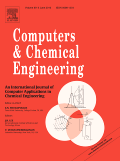 Authors: Karthik SUBRAMANYAN¹, Urmila DIWEKAR¹ and Stephen E. ZITNEY²
Authors: Karthik SUBRAMANYAN¹, Urmila DIWEKAR¹ and Stephen E. ZITNEY²
Affiliations: ¹Center for Uncertain Systems, Tools for Optimization & Management, Vishwamitra Research Institute, Clarendon Hills, IL 60514, United States and ²National Energy Technology Laboratory, Morgantown, WV 26507, United States
Reference: Karthik Subramanyan, Urmila Diwekar, Stephen E. Zitney, Stochastic modeling and multi-objective optimization for the APECS system, Computers & Chemical Engineering, Volume 35, Issue 12, 2011, pp. 2667-2679.
Abstract: “The Advanced Process Engineering Co-Simulator (APECS), developed at the U.S. Department of Energy’s (DOE) National Energy Technology Laboratory, is an integrated software suite that enables the process and energy industries to optimize overall plant performance with respect to complex thermal and fluid flow phenomena. The APECS system uses the process-industry standard CAPE-OPEN (CO) interfaces to combine equipment models and commercial process simulation software with powerful analysis and virtual engineering tools. The focus of this paper is the CO-compliant stochastic modeling and multi-objective optimization capabilities provided in the APECS system for process optimization under uncertainty and multiple and sometimes conflicting objectives…”
DOI: 10.1016/j.compchemeng.2011.02.003
Comments: the authors are describing how a CAPE-OPEN Unit Operation can be used to introduce stochastic modeling in a flowsheet, here modeled in Aspen Plus. The CAPE-OPEN Unit Operation, as developed, relies heavily on the specific keywords found in Aspen Plus input files. To make the Unit Operation more generic, this specificity ought to be removed. One could argue that this kind of supervision could be carried out through a Flowsheet Monitoring interface except that currently the design of such an interface specification is in its infancy and does not call for modifying parameters of an existing Flowsheet.
